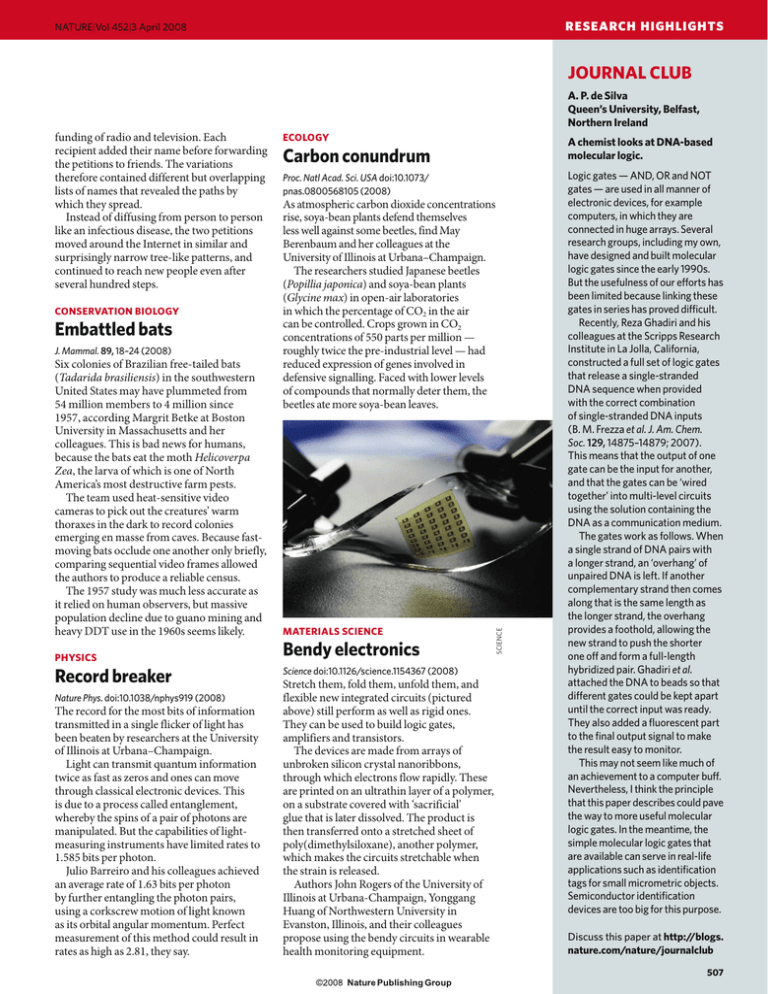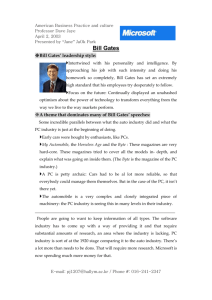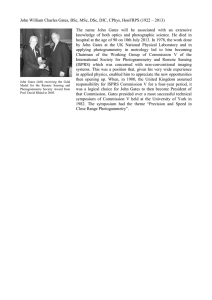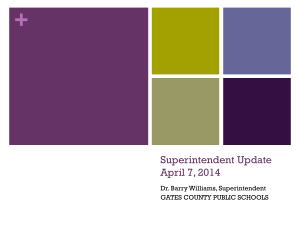Carbon conundrum
advertisement

RESEARCH HIGHLIGHTS NATURE|Vol 452|3 April 2008 JOURNAL CLUB A. P. de Silva Queen’s University, Belfast, Northern Ireland CONSERVATION BIOLOGY Embattled bats J. Mammal. 89, 18–24 (2008) Six colonies of Brazilian free-tailed bats (Tadarida brasiliensis) in the southwestern United States may have plummeted from 54 million members to 4 million since 1957, according Margrit Betke at Boston University in Massachusetts and her colleagues. This is bad news for humans, because the bats eat the moth Helicoverpa Zea, the larva of which is one of North America’s most destructive farm pests. The team used heat-sensitive video cameras to pick out the creatures’ warm thoraxes in the dark to record colonies emerging en masse from caves. Because fastmoving bats occlude one another only briefly, comparing sequential video frames allowed the authors to produce a reliable census. The 1957 study was much less accurate as it relied on human observers, but massive population decline due to guano mining and heavy DDT use in the 1960s seems likely. PHYSICS Record breaker Nature Phys. doi:10.1038/nphys919 (2008) The record for the most bits of information transmitted in a single flicker of light has been beaten by researchers at the University of Illinois at Urbana–Champaign. Light can transmit quantum information twice as fast as zeros and ones can move through classical electronic devices. This is due to a process called entanglement, whereby the spins of a pair of photons are manipulated. But the capabilities of lightmeasuring instruments have limited rates to 1.585 bits per photon. Julio Barreiro and his colleagues achieved an average rate of 1.63 bits per photon by further entangling the photon pairs, using a corkscrew motion of light known as its orbital angular momentum. Perfect measurement of this method could result in rates as high as 2.81, they say. ECOLOGY A chemist looks at DNA-based molecular logic. Carbon conundrum Proc. Natl Acad. Sci. USA doi:10.1073/ pnas.0800568105 (2008) As atmospheric carbon dioxide concentrations rise, soya-bean plants defend themselves less well against some beetles, find May Berenbaum and her colleagues at the University of Illinois at Urbana–Champaign. The researchers studied Japanese beetles (Popillia japonica) and soya-bean plants (Glycine max) in open-air laboratories in which the percentage of CO2 in the air can be controlled. Crops grown in CO2 concentrations of 550 parts per million — roughly twice the pre-industrial level — had reduced expression of genes involved in defensive signalling. Faced with lower levels of compounds that normally deter them, the beetles ate more soya-bean leaves. MATERIALS SCIENCE Bendy electronics Science doi:10.1126/science.1154367 (2008) Stretch them, fold them, unfold them, and flexible new integrated circuits (pictured above) still perform as well as rigid ones. They can be used to build logic gates, amplifiers and transistors. The devices are made from arrays of unbroken silicon crystal nanoribbons, through which electrons flow rapidly. These are printed on an ultrathin layer of a polymer, on a substrate covered with ‘sacrificial’ glue that is later dissolved. The product is then transferred onto a stretched sheet of poly(dimethylsiloxane), another polymer, which makes the circuits stretchable when the strain is released. Authors John Rogers of the University of Illinois at Urbana-Champaign, Yonggang Huang of Northwestern University in Evanston, Illinois, and their colleagues propose using the bendy circuits in wearable health monitoring equipment. SCIENCE funding of radio and television. Each recipient added their name before forwarding the petitions to friends. The variations therefore contained different but overlapping lists of names that revealed the paths by which they spread. Instead of diffusing from person to person like an infectious disease, the two petitions moved around the Internet in similar and surprisingly narrow tree-like patterns, and continued to reach new people even after several hundred steps. Logic gates — AND, OR and NOT gates — are used in all manner of electronic devices, for example computers, in which they are connected in huge arrays. Several research groups, including my own, have designed and built molecular logic gates since the early 1990s. But the usefulness of our efforts has been limited because linking these gates in series has proved difficult. Recently, Reza Ghadiri and his colleagues at the Scripps Research Institute in La Jolla, California, constructed a full set of logic gates that release a single-stranded DNA sequence when provided with the correct combination of single-stranded DNA inputs (B. M. Frezza et al. J. Am. Chem. Soc. 129, 14875–14879; 2007). This means that the output of one gate can be the input for another, and that the gates can be ‘wired together’ into multi-level circuits using the solution containing the DNA as a communication medium. The gates work as follows. When a single strand of DNA pairs with a longer strand, an ‘overhang’ of unpaired DNA is left. If another complementary strand then comes along that is the same length as the longer strand, the overhang provides a foothold, allowing the new strand to push the shorter one off and form a full-length hybridized pair. Ghadiri et al. attached the DNA to beads so that different gates could be kept apart until the correct input was ready. They also added a fluorescent part to the final output signal to make the result easy to monitor. This may not seem like much of an achievement to a computer buff. Nevertheless, I think the principle that this paper describes could pave the way to more useful molecular logic gates. In the meantime, the simple molecular logic gates that are available can serve in real-life applications such as identification tags for small micrometric objects. Semiconductor identification devices are too big for this purpose. Discuss this paper at http://blogs. nature.com/nature/journalclub 507




